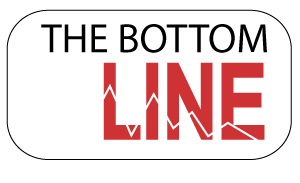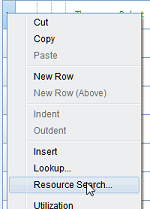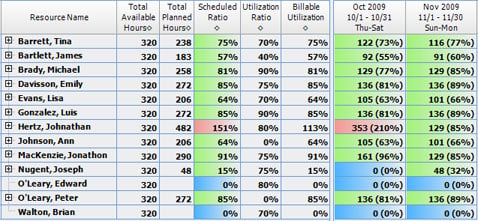How To: Proper Work Breakdown Structure
One of the most essential tools in project management is a Work Breakdown Structure, or WBS. The primary function of a WBS is to subdivide a project into more manageable components in terms of size, duration, and responsibility. By breaking a project down into smaller pieces it’s also easier to:
- Set measurable milestones for the project, and identify deliverables at the end of each phase that match up to the scope
- Allocate resources, complete scheduling and budgeting, manage procurement, maintain quality control, and manage risk
- Increase accountability by assigning individual responsibilities for each phase and task
- Know where you stand in terms of the total project (for example, are you 10% through the whole project, but 50% through the first phase?)
In short, the Work Breakdown Structure defines how you estimate, manage, and bill the project — and as a result, creating one should be priority one for every project.
Key design principles for an effective WBS
 1. Account for 100% (no more, no less). One of the most important principles is that the WBS must include 100% of the work as defined by the project scope. It must also capture all internal, external, and interim deliverables, including project management, among the work to be completed. The rule applies at all levels within the hierarchy: the sum of the work at the most detailed level must equal 100% of the work represented by the combined total of the categories at the highest level. Another aspect of the rule is that the WBS should not include any work that is outside the actual scope of the project.
1. Account for 100% (no more, no less). One of the most important principles is that the WBS must include 100% of the work as defined by the project scope. It must also capture all internal, external, and interim deliverables, including project management, among the work to be completed. The rule applies at all levels within the hierarchy: the sum of the work at the most detailed level must equal 100% of the work represented by the combined total of the categories at the highest level. Another aspect of the rule is that the WBS should not include any work that is outside the actual scope of the project.
2. Be mutually exclusive. There should be no overlap between two elements of a WBS in scope definition. Such an overlap could not only result in duplicated work or misunderstanding about responsibility and/or authority, but could also cause confusion in project cost accounting. One technique for avoiding this problem is to develop a WBS dictionary to clarify the differences between WBS elements and describe each in terms of milestones, deliverables, activities, scope, and other factors.
3. Focus on outcomes, not actions. The best way to stick to the 100% rule is to define Work Breakdown Structure elements in terms of outcomes, as opposed to actions. This strategy ensures that the WBS is not overly prescriptive in terms of method, and therefore allows for more flexibility and creative thinking on the part of team members. In addition, a WBS that subdivides work by project phases (e.g. preliminary design phase, critical design phase, etc.) must clearly separate the phases by deliverables that define the entry and exit criteria (e.g. an approved preliminary or critical design review).
4. Be detailed, but not too detailed. As useful as it is to divide work into smaller and more manageable elements, you also need to know when to stop. There are several ‘rules of thumb’ for determining appropriate activities or group of activities needed to produce a specific deliverable as defined by the WBS. The first is the “80 hour rule,” which cautions that no one activity or group of activities to produce a single deliverable should require more than 80 hours of effort. A second guideline is that no single activity or series of activities should take longer to complete than a reporting period. So, if your project team reports on its progress monthly, then no single activity or series of activities should be longer than one month long.
5. Keep it simple. Creating three levels in your WBS hierarchy (e.g., Project, Phase and Task) should be enough. Avoid identifying labor or activity codes as WBS elements, even if you use them to describe labor detail on billing invoices or backup reports. In addition, it’s not necessary to make every phase balanced; just because one phase has a task doesn’t mean that all should.
Work Breakdown Structure: a blueprint for project management
When finished, a well-organized WBS resembles a flowchart in which every element is logically connected to another. The primary requirement or objective appears at the top, with increasingly specific elements appearing beneath it. The elements at the bottom of the diagram represent tasks and activities small enough to be easily understood and carried out. An effective WBS avoids redundancy, but at the same time, leaves out no critical elements.
The bottom line is that a Work Breakdown Structure divides your project into distinct, manageable work elements. A WBS is useful to various groups within a company, including marketing, business development, accounting, and project management. A well-planned WBS is integral to successful project proposals, planning, scheduling, budgeting, and reporting.
Ready to learn more? Discover how an ERP system can benefit your firm by downloading our whitepaper.
Photo credit: http://virtualpminabox.com/



 In today’s day and age of fast changing technology, firms must stay abreast of all available solutions to better compete with competition, and win work. Since the ‘great recession’ of 2009, competition on winning work has increased exponentially. Successful firms have combated this increased competition by staying current with technology, and using well thought out techniques to win projects. Included below are five tips that will help your firm better impress clients, and ultimately win more work.
In today’s day and age of fast changing technology, firms must stay abreast of all available solutions to better compete with competition, and win work. Since the ‘great recession’ of 2009, competition on winning work has increased exponentially. Successful firms have combated this increased competition by staying current with technology, and using well thought out techniques to win projects. Included below are five tips that will help your firm better impress clients, and ultimately win more work. 1. Resources –
1. Resources – Do you lose sleep at night wondering if you have the capacity to handle work coming in or even worse if you have too many people? As a manager of a professional service firm, managing your human capital is a daily necessity to achieve firm growth and the anticipated performance expected from your employees. As the market changes, your firm needs information readily available to make quick decisions about acquiring, training, and scheduling your talent. Many firms rely on resource forecasting tools to handle the management of their employees. Let’s take a further look at some of the challenges firms have with managing their resources:
Do you lose sleep at night wondering if you have the capacity to handle work coming in or even worse if you have too many people? As a manager of a professional service firm, managing your human capital is a daily necessity to achieve firm growth and the anticipated performance expected from your employees. As the market changes, your firm needs information readily available to make quick decisions about acquiring, training, and scheduling your talent. Many firms rely on resource forecasting tools to handle the management of their employees. Let’s take a further look at some of the challenges firms have with managing their resources:  I was talking recently with a prospective client who observed that his firm had outgrown QuickBooks (QB). The conversation eventually led to a discussion of the advantages of ERP systems over back office accounting systems — which include not only efficiency gains, but strategic improvements as well.
I was talking recently with a prospective client who observed that his firm had outgrown QuickBooks (QB). The conversation eventually led to a discussion of the advantages of ERP systems over back office accounting systems — which include not only efficiency gains, but strategic improvements as well. 





 Deltek Vision is a leading enterprise software solution designed for project-based professional services firms to improve business performance, streamline operations, and win new business. Deltek Vision uniquely integrates end-to-end business processes by automating the marketing, financial management, planning, tracking and administration of resources and projects.
Deltek Vision is a leading enterprise software solution designed for project-based professional services firms to improve business performance, streamline operations, and win new business. Deltek Vision uniquely integrates end-to-end business processes by automating the marketing, financial management, planning, tracking and administration of resources and projects. The conversations module on Kona is my favorite internet based tool that I have found since I discovered Google Docs. Kona allows users to hold separate conversations on each task of the project. Notice that an important detail was left off of the calendar for tomorrow’s meeting? No need to open up your email to contact the event host, simply update the event, and you are free to comment on the conversation to let others know of the change. This condensing of communication in to one multi-faceted medium allows for a clear and effective message, enabling project staff to focus on completing the project, and not talking about it.
The conversations module on Kona is my favorite internet based tool that I have found since I discovered Google Docs. Kona allows users to hold separate conversations on each task of the project. Notice that an important detail was left off of the calendar for tomorrow’s meeting? No need to open up your email to contact the event host, simply update the event, and you are free to comment on the conversation to let others know of the change. This condensing of communication in to one multi-faceted medium allows for a clear and effective message, enabling project staff to focus on completing the project, and not talking about it. The files module. How many times have you emailed someone a file, only to be told later that they never received it? Many people cannot receive emails larger than 2mb – a data size that is nothing in today’s media rich web. While programs like Outlook have made it easier to manage attachments, email was create in the late 80’s and was never intended to be a storage database for large, detailed files.
The files module. How many times have you emailed someone a file, only to be told later that they never received it? Many people cannot receive emails larger than 2mb – a data size that is nothing in today’s media rich web. While programs like Outlook have made it easier to manage attachments, email was create in the late 80’s and was never intended to be a storage database for large, detailed files.